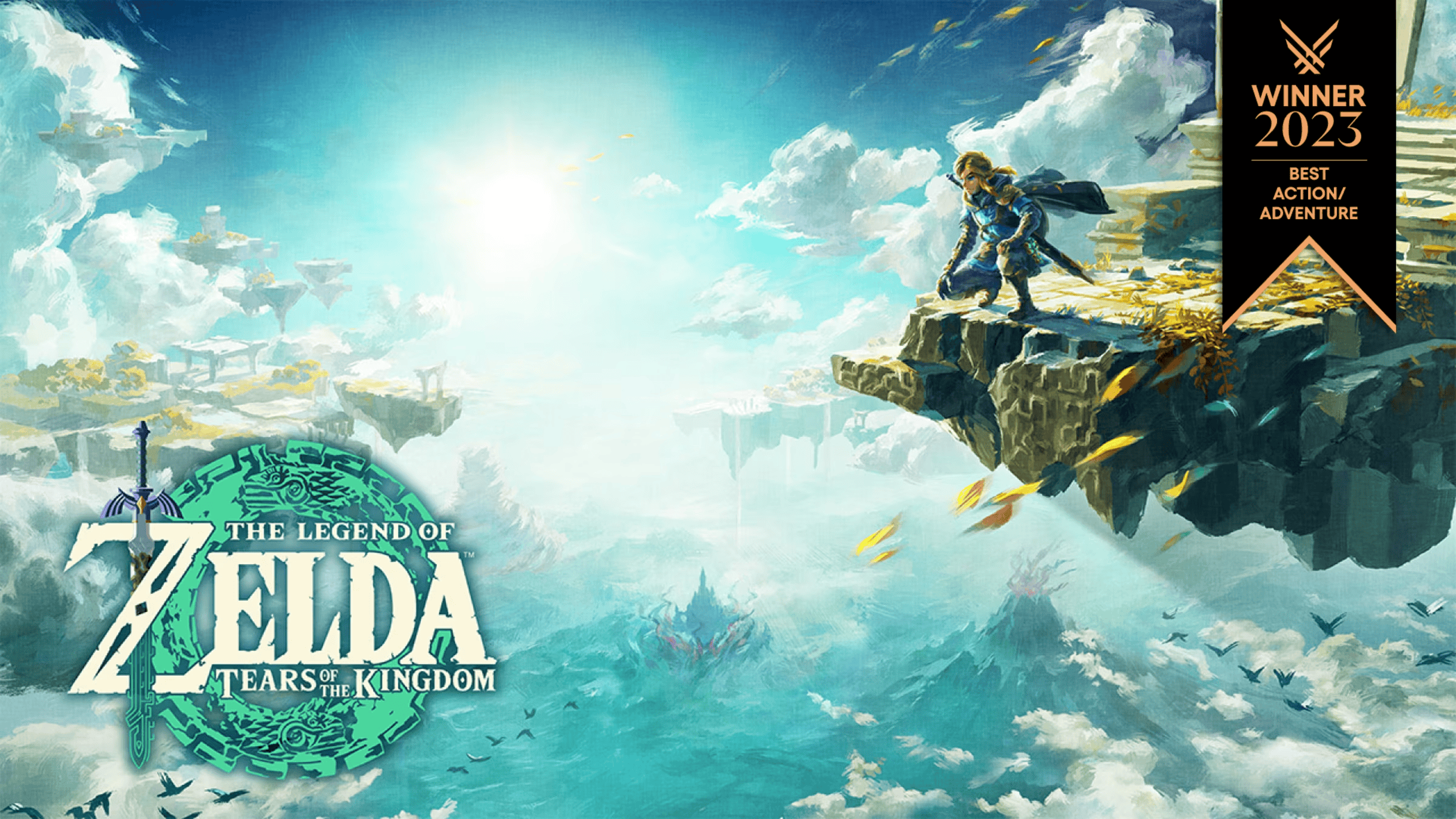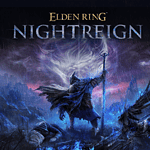When The Legend of Zelda: Tears of the Kingdom launched in May 2023, expectations were sky-high—not only for the game itself, but also for what would come after. Breath of the Wild had set a precedent with its rich post-launch content, and fans naturally assumed that a similar roadmap awaited this equally ambitious sequel. But instead of teasing expansion packs or extra dungeons, Nintendo made an unexpected move: they confirmed that Tears of the Kingdom would not be getting any DLC. No “Champions’ Ballad 2.” No Master Trials-style challenge content. Nothing. Why?
The answer, it turns out, says a lot about where Zelda is headed next.
Nintendo Has Closed the Book on This Hyrule — For Now
In a 2023 interview, long-time series producer Eiji Aonuma explained the decision simply: the team had done everything they set out to do with this version of Hyrule. “We feel like we’ve explored everything we can in that world,” Aonuma said. And he’s not wrong—Tears of the Kingdom introduced massive verticality through its Sky Islands, a haunting underworld with The Depths, and game-changing mechanics like Ultrahand, Fuse, and Ascend. It wasn’t just a sequel—it was a reinvention layered on top of a reinvention.
The implication here is that Tears of the Kingdom wasn’t just an expansion of Breath of the Wild; it was the final word on that incarnation of Hyrule. Trying to stretch it further through DLC might have risked weakening the cohesiveness of what the game already accomplished.
Why No DLC? A Strategic and Creative Shift
This isn’t just a matter of “the game is done.” There are several key reasons behind Nintendo’s pivot away from post-launch content:
- Design Exhaustion: Tears of the Kingdom took over five years to develop and pushed the Switch hardware to its absolute limits. The dev team likely hit diminishing creative returns when considering what else could be added.
- Narrative Closure: The game’s ending felt complete. Unlike Breath of the Wild, which teased follow-ups through its DLC, Tears resolves its themes and character arcs without leaving glaring threads hanging.
- Internal Development Priorities: With the Switch 2 launching in mid-2025, Nintendo is clearly shifting its internal teams toward next-gen development. The Zelda team, in particular, is likely preparing a title that takes full advantage of the new hardware, which would explain the lack of investment in extending the current game.
- DLC Isn’t Always a Win: While Breath of the Wild‘s DLC was well-received, it didn’t reshape the core experience. Nintendo may have analyzed player data and realized the vast majority of engagement happened in the base game, leading them to reconsider the ROI of making more add-ons for a game that already feels complete.
Looking Back: A Contrast with Breath of the Wild’s DLC
Breath of the Wild‘s DLC added new challenge shrines, a Master Mode, and the story-heavy Champions’ Ballad, which further explored the backstory of Link’s allies. But Tears of the Kingdom already went deeper on lore, gameplay, and traversal systems than its predecessor. Many of the features that would have been obvious DLC material—underground zones, sky exploration, vehicle building—were already baked into the base game.
So instead of releasing more content for a game already packed to the brim, Nintendo seems to be pivoting toward offering something fundamentally new.
The Switch 2 and a Possible Enhanced Edition
With the Nintendo Switch 2 officially set to release on June 5, 2025, many fans expect Nintendo to revisit Tears of the Kingdom in some capacity—not with DLC, but with a performance-enhanced re-release. Rumors of a “Switch 2 Edition” include:
- Higher-resolution textures
- Stable 60fps performance
- Faster loading times
- Integration with a new companion tool called Zelda Notes (a lore-tracking and build-sharing system)
While not confirmed, these upgrades suggest Nintendo may view next-gen ports as an alternative to traditional DLC—especially for massive titles like Tears of the Kingdom, which can find a second life on upgraded hardware.
What the Future of Zelda Might Look Like
The decision to skip DLC doesn’t mean the franchise is stalling. On the contrary, it hints at a bold new chapter. Here’s what could be next:
- A New Setting: Instead of sticking with the familiar Hyrule, the next Zelda game might deliver a fresh location entirely—much like the leap from Ocarina of Time to Majora’s Mask.
- A Different Art Style or Perspective: Some fans speculate that the Zelda team might return to top-down gameplay or even adopt a more experimental visual identity—similar to how Link’s Awakening (2019) shook up expectations.
- Mechanical Reinvention: Zelda is known for shifting gameplay styles. With Ultrahand and Ascend now firmly in the past, the next game could introduce a new core mechanic that redefines how players interact with the world.
- Launch Title Potential: If any franchise is likely to debut alongside the Switch 2, it’s Zelda. Whether that means a new entry or an enhanced reissue of Tears of the Kingdom, the franchise will likely play a major role in the console’s early life.
Nintendo’s approach with Tears of the Kingdom sends a clear message: sometimes, the best sequel is the one that ends on its own terms. Rather than revisiting Hyrule through DLC, the developers are closing the chapter and preparing something entirely new—something that may once again redefine what Zelda can be.
Exploration of North Lomei Labyrinth
The North Lomei Labyrinth continues to be one of the most intriguing locations in The Legend of Zelda: Tears of the Kingdom. Recently, players have discovered new pathways connecting the surface labyrinth to its sky counterpart directly above it. The latest update reveals that the North Lomei Labyrinth contains a hidden door leading to a chasm that opens only after completing specific steps in the North Lomei Prophecy quest.
Explorers of Hyrule have noted connections between the labyrinth and ancient Zonai history. Interesting lore suggests that before the Zonai descended from the heavens, the structures were actually known as North and South Lomei Castle top floors. This revelation adds depth to the mysterious civilization’s connection to Hyrule’s past and present.
For adventurers seeking to conquer this challenging maze, new information has emerged about efficiently navigating both the ground-level labyrinth and its sky counterpart. The Igashuk Shrine serves as a key landmark within the maze, and interacting with specific elements after unlocking this shrine will trigger additional quest content that many players have previously overlooked.
The North Lomei Labyrinth represents one of Hyrule’s most challenging structures, requiring careful navigation and understanding of its complex design. Adventurers seeking to conquer this massive maze must prepare for harsh conditions and puzzling pathways.
- Hidden pathways now connect the North Lomei Labyrinth to its sky counterpart, revealing new areas to explore.
- The North Lomei Prophecy quest requires players to dive through a special door that only opens after specific conditions are met.
- Ancient Zonai connections suggest the labyrinths were originally castle structures, adding new dimensions to Hyrule’s history.
Geographical Location and Description
North Lomei Labyrinth is situated in the northwestern region of Hyrule, specifically within the frigid Hebra region near Tabantha Snowfield. This massive stone structure stands out dramatically against the snowy landscape, visible from considerable distances.
The labyrinth features towering walls made of ancient black stone that seem impervious to damage or weathering. Unlike traditional mazes, this structure exists in multiple dimensions – with the main ground-level maze complemented by a sky labyrinth positioned directly above it.
Inside, narrow corridors branch in confusing patterns, often leading to dead ends or circular paths. The central chamber houses the Mayaotaki Shrine, which contains valuable rewards including pieces of the coveted Barbarian Armor set.
Historical Significance in Hyrule
The North Lomei Labyrinth shares architectural similarities with two other labyrinths in Hyrule – the Lomei Labyrinth Island to the northeast and the South Lomei Labyrinth. These structures date back to ancient times, likely constructed during the height of Hyrulean civilization.
Historians believe these labyrinths served as trials for warriors or sacred sites for religious ceremonies. The name “Lomei” suggests a connection to an ancient tribe or leader who commissioned these impressive structures.
The placement of shrines within these labyrinths indicates they were designed to test worthy heroes. The ancient technology found inside connects them to the same civilization that created the Divine Beasts and Sheikah Slate.
Orientation and Navigation Challenges
Navigating the North Lomei Labyrinth presents substantial challenges even for experienced explorers. The identical appearance of corridors makes maintaining orientation extremely difficult without external reference points.
Many adventurers employ various strategies to avoid getting lost:
- Marking paths with objects or map pins
- Climbing to higher vantage points when possible
- Following wall edges consistently (right or left)
- Using the in-game map to track position
The labyrinth’s most dangerous aspect is not enemies but disorientation. Travelers often spend hours within its walls before finding the central shrine. The addition of the sky labyrinth in Tears of the Kingdom further complicates navigation, requiring vertical thinking.
Weather conditions in the Hebra region add another layer of difficulty, with frequent snowstorms reducing visibility and making exploration even more treacherous.
Recent Discoveries and Updates
Explorers continue to uncover new secrets within the North Lomei Labyrinth in Tears of the Kingdom. The complex maze system has revealed additional challenges and rewards since the game’s release.
New Findings in Shrine Quests
The North Lomei Prophecy quest has become a focal point for adventurers seeking to master all three connected labyrinths. Recent findings confirm that completing the surface labyrinth merely serves as the first step in unlocking the more challenging sky labyrinth component.
The Dila Maag Shrine, hidden within the North Lomei complex, contains specialized trials that differ from initial reports. Players have discovered alternative paths to reach this shrine without navigating the entire maze. These shortcuts involve creative use of the Ultrahand ability to build makeshift bridges across certain sections.
Several travelers have documented hidden chests containing rare materials that weren’t previously cataloged in game guides. These resources prove particularly valuable for armor upgrades.
Updated Strategies for Puzzle Solving
Effective navigation of the North Lomei Labyrinth has evolved with new player-tested methods. The most successful approach involves marking walls with arrows using the map system rather than trying to memorize the entire layout.
Players have discovered that using the paraglider from specific heights provides crucial scouting opportunities. This aerial perspective reveals patterns in the maze design that aren’t apparent from ground level.
Most Efficient Path Strategy:
- Enter from the northeast entrance
- Follow the right wall until reaching the central chamber
- Use Ascend ability at the marked stone platform
- Deploy paraglider to reach the upper section
For puzzle rooms within the labyrinth, combining Ultrahand with Fuse abilities offers solutions not originally intended by developers.
Seasonal Changes and Their Effects
The North Lomei Labyrinth experiences environmental variations based on Hyrule’s weather systems. During rainstorms, certain pathways become slippery, affecting movement speed and climbing ability.
Blood Moons significantly impact the labyrinth experience. All defeated enemies respawn, making previously cleared paths dangerous again. Some players strategically time their exploration to avoid these lunar events.
Temperature fluctuations in the labyrinth region require appropriate gear selection. Northern sections experience more extreme cold, necessitating warm clothing or spicy elixirs to prevent damage.
Lightning storms create additional hazards for players carrying metal equipment. Travelers should consider switching to non-conductive weapons when weather patterns suggest electrical activity in the area.
Gameplay Enhancements Related to the Labyrinth
The North Lomei Labyrinth has received several gameplay updates that enhance the overall player experience. These improvements focus on equipment, combat mechanics, and navigation tools that make exploring the massive maze more rewarding.
Additional Armor Pieces and Items
The North Lomei Labyrinth now offers expanded rewards for persistent explorers. Players can find the complete Barbarian Armor set, including the coveted Barbarian Helm that was previously difficult to locate. This powerful armor increases attack power and provides substantial defense.
In the center of the labyrinth, near the Qaza Tokki Shrine, players can now discover the rare Diamond Circlet. This headpiece offers special elemental protection that proves useful against guardians found throughout the maze.
The Phantom Ganon armor pieces are now available as part of the Evil Spirit Armor Set for those who conquer all nine labyrinths. This distinctive armor grants stealth bonuses and a unique spectral appearance.
New special variants of the Hylian Shield can be found in hidden corners of the labyrinth. These shields offer increased durability and special effects against certain enemy types.
Improvements in Combat and Stealth Tactics
Combat mechanics within the North Lomei Labyrinth have been refined to provide more strategic options. Players can now use the environment more effectively, with new points for stealth attacks and ambush opportunities against the maze’s guardians.
The labyrinth’s layout supports improved stealth gameplay, with additional shadows and hiding spots that complement the abilities granted by armor sets like the Phantom Ganon gear. Players can now execute silent takedowns on enemies.
Enemy AI has been enhanced, making guardians and other foes more responsive to player movements. This creates more challenging and dynamic combat situations that reward careful planning.
New combat challenges offer special rewards for players who defeat certain numbers of enemies within time limits. These timed trials test mastery of both the maze’s layout and combat skills.
Advancements in Navigation Technology
The map system for the North Lomei Labyrinth has received significant upgrades. Players can now place multiple custom markers to track explored paths and points of interest, reducing the frustration of getting lost repeatedly.
A new compass feature specifically designed for the labyrinth helps players maintain orientation. This tool becomes increasingly accurate as players discover more of the maze’s layout.
Sheikah Slate functionality has been expanded to include temporary wall-phasing abilities in specific sections of the labyrinth. This allows for new puzzle-solving approaches and alternate pathways.
Environmental clues have been added throughout the maze, including subtle markings and lighting that guide observant players toward important areas and hidden treasures. These design improvements make navigation more intuitive while preserving the challenge.
Cultural References and Mythologies
The North Lomei Labyrinth draws inspiration from various cultural references across Hyrule. Its design and significance connect to ancient stories and traditions from different regions, showing how deeply mythology is woven into Hyrule’s landscape.
Rito Village and the Ancient Rito Song
The Rito people have a lesser-known song that references maze-like structures in the sky. This ancient melody mentions “paths that confuse even the wind” – a clear reference to the challenges of navigating the North Lomei Labyrinth.
Travelers to Rito Village can sometimes hear village elders singing this melody during evening gatherings. The lyrics suggest that sky labyrinths served as tests of courage for young Rito warriors before they received their first bows.
Recent discoveries near Rito Village revealed stone carvings depicting bird-like figures navigating complex paths. Researchers believe these may be ancient representations of Rito ancestors completing labyrinth trials.
Legends Surrounding the Gerudo Town and Tribe
Gerudo folklore contains stories of a great warrior queen who designed the first labyrinth as a training ground for her elite guards. This legend likely connects to the Lomei labyrinths’ military purpose.
Stone tablets found in Gerudo Desert mention “walls that shift like sand dunes” when describing ancient trials. Some scholars believe these texts refer to the Lomei labyrinths and suggest the Gerudo may have helped build or maintain them.
The Gerudo’s traditional maze patterns in their tapestries and architecture bear striking similarities to sections of the North Lomei Labyrinth. Their warriors still practice navigation skills in small maze constructions as part of their combat training.
Significance of Satori Mountain in Local Folklore
Satori Mountain holds legends that connect to the labyrinths through the concept of spiritual trials. Local stories tell of a path on the mountain that becomes maze-like when walked at night under a full moon.
The protective spirit of Satori Mountain, known as the Lord of the Mountain, is said to have created the original labyrinth designs. Pilgrims who visit both Satori Mountain and complete a labyrinth journey report enhanced spiritual awareness.
Recent excavations near Satori Mountain uncovered stone fragments with pattern markings identical to those found in the North Lomei Labyrinth. These discoveries suggest a historical connection between the sacred mountain and the ancient maze structures.
Challenges and Events
The North Lomei Labyrinth continues to evolve with dynamic challenges and seasonal variations that test even veteran explorers. Recent modifications have transformed this ancient structure into a living puzzle that never feels quite the same twice.
Seasonal Events Impacting the Labyrinth’s Environment
Spring has brought significant changes to the North Lomei Labyrinth. Increased rainfall has created temporary flooding in lower sections, forcing adventurers to find new paths through previously accessible corridors. The eastern wing now features rare Smotherwing Butterflies that only appear during this season’s warmer temperatures.
Wind patterns have shifted dramatically since February 2025, creating powerful updrafts near the central tower. Clever explorers use these currents to reach previously inaccessible areas containing special treasure chests. These seasonal updrafts will likely diminish by summer.
The melting snow has also revealed new entrances to underground chambers that connect to Eventide Island’s challenge system. These pathways remain open only until early May, according to Labyrinth researchers.
Newly Introduced Combat and Puzzle Challenges
Recent updates have added formidable new enemies to the Labyrinth. A rare golden Hinox now guards the northeastern section, requiring teamwork or exceptional skill to defeat. Its appearance coincides with the full moon cycle.
Gloom Spawn have begun inhabiting the darkest corridors, creating environmental puzzles where light sources must be strategically placed. These shadow creatures drop valuable materials used in specialized equipment crafting.
A new time-limited challenge requires defeating twelve Moblins scattered throughout the maze within 20 minutes. Successful completion rewards players with a unique weapon enhancement.
The puzzle complexity has increased with rotating wall segments that change position every three hours of real-world time. These dynamic elements force explorers to adapt strategies on each visit.
Community Events and Competitions
The Annual Labyrinth Sprint Championship starts April 15, 2025. Participants race through a marked course with checkpoints throughout the Labyrinth. Last year’s winner completed the course in an impressive 17 minutes and 23 seconds.
Weekly treasure hunts organized by the Hyrule Exploration Society feature clues posted online every Monday. Participants share their progress through social media tags.
Monthly photography contests challenge visitors to capture the most stunning or unusual moments within the Labyrinth. March’s theme focuses on interactions between wildlife and the ancient architecture.
The upcoming “Survive the Night” event will test adventurers’ endurance as they navigate the Labyrinth during extended darkness with increased enemy spawns and limited resources.
Tips and Strategies for Adventurers
The North Lomei Labyrinth presents unique challenges that require proper preparation and techniques. Smart travelers can overcome this maze with the right equipment, environmental awareness, and stamina management.
Optimal Armor and Weapon Loadouts
When tackling the North Lomei Labyrinth, armor selection is crucial. The Sheik’s Mask proves especially valuable due to its stealth bonus, allowing adventurers to avoid unnecessary enemy encounters within the maze’s narrow corridors.
For weapons, prioritize durability and versatility. The Great Flameblade serves two purposes: providing light in dark corners and dealing significant damage to ice-based enemies found throughout the labyrinth. This dual functionality saves inventory space.
Consider equipping armor with cold resistance bonuses as the northern region experiences harsh temperatures. Topaz accessories offer electrical resistance, protecting against shock-based traps or enemies.
Always bring at least one shield for defensive maneuvers. The backflip technique combined with a shield can create perfect dodge opportunities, triggering slow-motion flurry attacks against labyrinth guardians.
Utilizing Updrafts and Environmental Advantages
The maze’s design includes natural updrafts that clever adventurers can exploit. These air currents allow for strategic paragliding, providing aerial views of pathways and shortcuts that aren’t visible from ground level.
When navigating between labyrinth sections, use the paraglider while consulting your map. This overhead perspective reveals dead ends before you waste time exploring them.
Look for climbing spots on walls with small ledges. These provide essential rest points to recover stamina while scaling the structure’s exterior. The northwestern corner features particularly helpful wind currents that boost climbing efficiency.
Weather patterns affect navigation strategies. Foggy conditions obscure visibility, but rain creates slippery surfaces that can be used for faster descents. Plan your exploration around these environmental factors.
Secrets to Mastering the Stamina Wheel
The Stamina Wheel represents your most valuable resource in the North Lomei Labyrinth. Efficient management means the difference between reaching central chambers and falling short.
Prepare stamina-boosting meals before attempting the labyrinth. Enduring elixirs that temporarily expand your Stamina Wheel prove invaluable during long climbing sequences or extended paragliding.
Master the climbing rhythm. Alternating between climbing and resting on small ledges optimizes stamina consumption. When possible, use short bursts of climbing rather than continuous ascents.
Practice the backflip technique to conserve stamina during combat. This defensive maneuver requires less energy than continuous blocking while setting up powerful counterattacks.
Strategic placement of travel points around the labyrinth perimeter allows for quick returns if stamina becomes depleted. This prevents frustrating restarts after failed attempts.
Collectibles and Secrets of the North Lomei Labyrinth
The North Lomei Labyrinth holds numerous valuable treasures and mysteries for adventurers willing to brave its confusing pathways. From rare equipment to special resources, this ancient maze rewards thorough exploration.
Hidden Armor and Weapon Locations
The North Lomei Labyrinth contains several noteworthy equipment pieces hidden throughout its winding corridors. One of the most valuable finds is a chest containing a Gold Rupee located in the main courtyard, just past a Malice Eyeball that guards the path.
For those who complete the North Lomei Prophecy quest, a special armor piece awaits as a reward. This quest requires Link to prove himself worthy by completing three different maze challenges.
Players searching the very top of the labyrinth will discover a chest containing a Diamond. This rare gem can be used for armor upgrades at Great Fairy fountains or sold for a substantial sum.
Some explorers have reported finding parts of the legendary Hylian Shield set within the deeper sections of the labyrinth. These items provide excellent protection against attacks from all angles.
Unique Resources and Their Uses
The North Lomei Labyrinth contains several rare materials not commonly found elsewhere in Hyrule. Dragon parts occasionally spawn in specific locations within the maze, particularly during stormy weather conditions.
These dragon materials are essential for upgrading certain armor sets and creating powerful elixirs. Collectors seeking to complete their Hyrule Compendium will find several unique flora and fauna species within the labyrinth’s walls.
Small deposits of rare minerals appear throughout the structure. These include luminous stones embedded in walls and ore deposits containing precious gems.
The outer edges of the labyrinth feature special mushroom varieties that provide enhanced effects when cooked. These ingredients can create dishes that boost stealth abilities, perfect for navigating the maze undetected by guardians.
Easter Eggs and References to Past Games
Nintendo included several nods to earlier Legend of Zelda titles within the North Lomei Labyrinth. Observant players might notice wall patterns reminiscent of the Lost Woods maze from Ocarina of Time.
One secluded corner contains stone carvings depicting the ancient Zora’s Domain. These carvings show architectural elements from previous game iterations in the series.
The central chamber design bears striking similarities to Goron City layouts from past games. The circular pattern with branching pathways mirrors the traditional Goron dwelling structure.
Musical notes played in certain sections sound remarkably similar to classic Zelda melodies. Standing in specific spots might trigger familiar tunes that longtime fans will recognize.
A small shrine within the labyrinth contains tablets with ancient Hylian text that references events from earlier games in the series.
Integration with The Legend of Zelda Series
The North Lomei Labyrinth stands as a significant location that connects multiple games in The Legend of Zelda franchise through both architectural design and lore implications.
Connections to ‘Breath of the Wild’ and ‘Tears of the Kingdom’
In Breath of the Wild, the North Lomei Labyrinth housed the Qaza Tokki Shrine at its center, along with the Barbarian Armor set that many players sought to complete. This maze was one of three labyrinths scattered across Hyrule, each presenting unique navigational challenges.
Tears of the Kingdom expanded on this concept by adding a sky labyrinth directly above the original North Lomei Labyrinth. According to search results, this newer iteration is referred to as “North Lomei Castle top floor,” suggesting deeper lore connections.
The Mayaotaki Shrine in Tears of the Kingdom requires players to navigate this complex structure to collect treasures and the Light of Blessing. This dual-layer approach to the labyrinth creates a vertical exploration element not present in earlier games.
The Influence of ‘Ocarina of Time’ on the Labyrinth Design
While not directly appearing in Ocarina of Time, the Lomei Labyrinths draw inspiration from the maze-like structures found in the Forest Temple and the Lost Woods. The concept of disorienting navigation has been a staple of The Legend of Zelda series since its early days.
Recent Reddit discussions suggest possible lore connections between the Lomei structures and the ancient Zonai civilization, who “descended from the heavens” to Hyrule. This potentially links the sky islands of Tears of the Kingdom with the ground-based structures from previous titles.
The architectural style of the labyrinths, with their tall stone walls and ancient patterns, bears resemblance to the Temple of Time’s design elements from Ocarina of Time, creating visual continuity across the franchise’s timeline.
Interaction and Community Involvement
The North Lomei Labyrinth has become a focal point for player collaboration and knowledge sharing. Gamers worldwide have worked together to uncover its secrets and document optimal paths through this challenging maze.
Player-Driven Exploration and Documentation
Players have created detailed maps and guides for navigating the North Lomei Labyrinth’s complex pathways. Many have documented both the surface labyrinth and its sky counterpart, highlighting the locations of the Mayaotaki Shrine and other hidden treasures.
Some dedicated explorers have even tracked the most efficient routes through the maze. These routes help other players complete Shrine Quests without the frustration of endless wandering.
Creative players have used Amiibo functionality to summon Epona near the labyrinth entrance, making travel to this remote northern location much easier. This technique has become particularly popular for those visiting from distant locations like Lanayru Bay.
Role of Online Communities in Solving the Labyrinth’s Mysteries
Gaming forums and social media groups have become essential resources for sharing North Lomei Labyrinth strategies. Discord servers dedicated to Tears of the Kingdom feature channels specifically for labyrinth navigation tips.
Community members frequently share screenshots and videos of hidden areas containing Champion Weapons and other valuable items. These collaborative efforts have uncovered secrets that might otherwise remain hidden.
Veterans who mastered previous challenges like Master of the Wind share their expertise with newcomers. The supportive environment helps players who struggled with earlier game areas like the Great Plateau.
Weekly community challenges often involve speedrunning the labyrinth or completing it using unconventional methods. These activities keep the North Lomei experience fresh and engaging long after initial completion.
Technical Aspects and Gameplay Mechanics
The North Lomei Labyrinth presents unique technical challenges and gameplay elements that showcase the advanced capabilities of Tears of the Kingdom’s game design. The intricate maze structure combines traditional navigation puzzles with new environmental interactions.
Game Engine and Design Considerations
The North Lomei Labyrinth demonstrates the impressive rendering capabilities of the game engine, handling massive stone structures while maintaining consistent performance. The labyrinth’s design allows players to approach it from multiple angles – either navigating through the winding paths on foot or using the paraglider to attempt aerial shortcuts.
Game developers created a dynamic lighting system that casts realistic shadows throughout the maze, adding to the mysterious atmosphere while serving as subtle navigation cues. The labyrinth’s walls have collision detection that prevents most abilities from bypassing them, enforcing the puzzle-solving aspect.
Fast Travel points are strategically placed, allowing players to return after discovering key locations without repeating the entire maze.
Physics and Environmental Interactions
Players can utilize Magnesis and other abilities to interact with specific elements within the labyrinth. Metal objects can be manipulated to create makeshift bridges or moved to reveal hidden passages that lead to the Qaza Tokki, Mozo Shenno, and Shada Naw Shrines.
Weather conditions affect navigation through the labyrinth. During rain, climbing becomes more difficult, while snowstorms in the Hebra region can reduce visibility dramatically.
The “upheaval” mentioned in notes found within the labyrinth refers to physical changes in the environment tied to the game’s storyline. These changes are reflected in the terrain mechanics, where certain paths and entrances weren’t accessible before these events.
Impact of Amiibo and In-Game Collectibles
Scanning compatible Amiibo near the North Lomei Labyrinth can provide valuable resources for surviving the challenging environment. The Zelda series Amiibo may drop exclusive equipment that helps with navigation or combat encounters within the maze.
The labyrinth contains multiple collectibles that influence gameplay. Ancient components found within can be used for upgrading gear, while completing the Shrine Quest associated with the labyrinth rewards players with rare armor pieces.
Special chests contain items that enhance Link’s abilities temporarily, giving players advantages when navigating difficult sections. These rewards are balanced to provide meaningful progression without trivializing the challenge of the maze itself.
Frequently Asked Questions
The North Lomei Labyrinth presents several challenges to players in Tears of the Kingdom. Many seek efficient solutions to navigate the maze, find hidden treasures, and complete related quests.
What strategies exist for navigating the North Lomei Labyrinth in Tears of the Kingdom?
Players can follow a path of pine cones left by a Zonai Research team to navigate through the North Lomei Labyrinth. This approach provides the simplest solution for reaching the end of the maze without getting lost.
The labyrinth can be tackled from different angles, including from above using Link’s gliding abilities. Some players prefer to climb the surrounding walls to get a better view of the maze layout.
Using markers on the map can help track progress through the complex pathways of the labyrinth.
Is there a comprehensive guide for solving the North Lomei Sky Labyrinth puzzle?
The North Lomei Sky Labyrinth requires different navigation techniques compared to the surface version. Players should focus on using Link’s Ultrahand and Ascend abilities to traverse this aerial puzzle.
The solution often involves finding specific anchor points throughout the floating structure. These points allow for strategic movement between platforms.
Several online guides provide step-by-step instructions with visual aids for completing this challenging puzzle.
What hidden treasures are located in the North Lomei Labyrinth?
The Mayaotaki Shrine can be found within the North Lomei Labyrinth, offering a Light of Blessing upon completion. This shrine is a primary objective for many exploring the maze.
Special armor pieces are among the most valuable treasures hidden within the labyrinth. These items often provide unique benefits that enhance Link’s abilities.
Rare weapons, materials, and Zonai devices can also be discovered throughout the maze’s various chambers and hidden areas.
Are there any known glitches or shortcuts for the North Lomei Labyrinth?
Some players have discovered that using Recall on objects can create improvised elevators to bypass sections of the labyrinth. This technique exploits the physics system in unexpected ways.
Ultrahand combinations with Zonai devices sometimes allow players to create makeshift bridges or climbing structures. These can provide access to areas that would normally require navigating through the maze.
Shield-surfing down certain walls has been reported as a potential shortcut by some players.
What challenges must be overcome to reach the top floor of North Lomei Castle?
Reaching the top floor of North Lomei Castle involves defeating several powerful enemies that guard the path upward. These encounters test the player’s combat abilities.
Environmental puzzles must be solved to unlock certain doors and passages within the castle. These often involve manipulating objects or activating specific mechanisms.
Weather conditions at higher elevations can affect gameplay, with lightning strikes and reduced visibility creating additional challenges.
What are the implications of the North Lomei Prophecy in the game’s storyline?
The North Lomei Prophecy serves as a significant side quest that ties into the larger narrative about ancient Zonai technology and history. Completing it reveals important lore about the region.
Players must prove themselves worthy by overcoming three different maze challenges. This trial-by-labyrinth format connects to ancient traditions within the game world.
The prophecy ultimately leads to rewards that help Link in his main quest, suggesting that these ancient trials were designed to prepare heroes for greater challenges.






